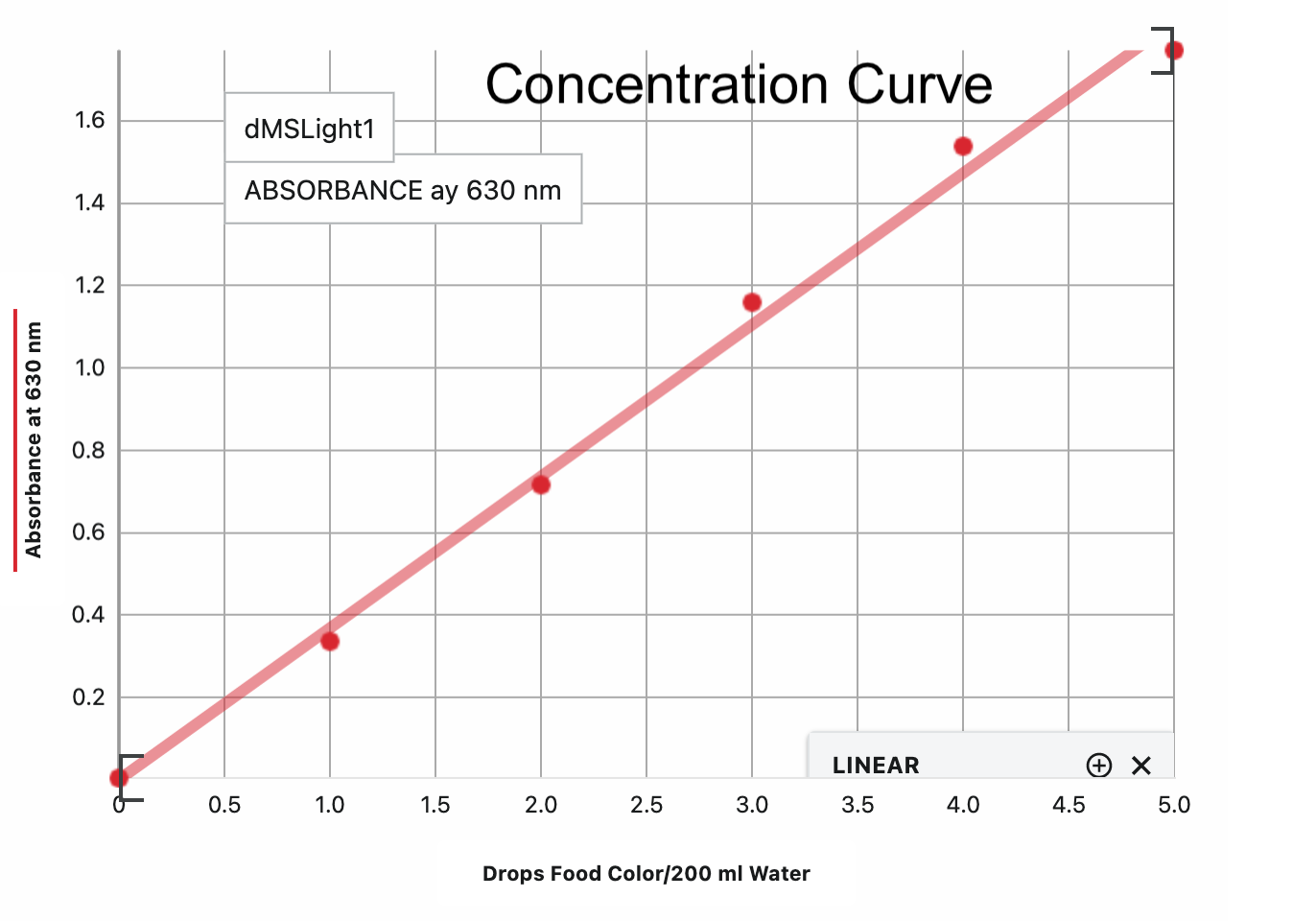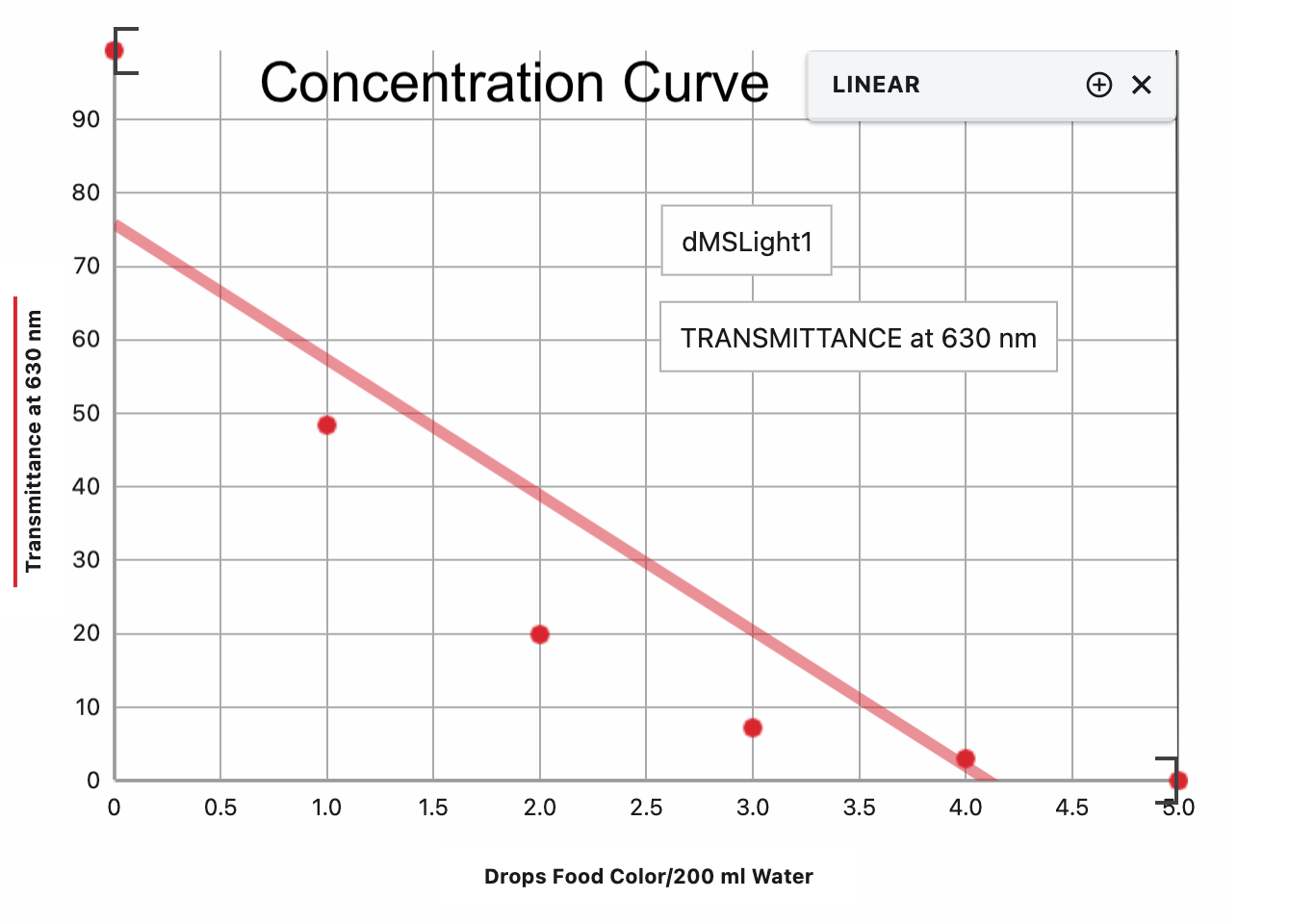Teacher Portal
Light
Deep Analysis
Deep Analysis
Light

Deep Analysis
Use the questions below to go deeper into the scientific concepts and applications of each Investigation. Note that questions highlighted in orange text are also featured in Phase 3.1 (Conclusions) of the Student Guide PDF.
Investigation 1
- Which tool do scientists use to find out exactly how much light is absorbed or transmitted by a liquid? A spectrophotometer.
- How is the value of transmittance reported? A value between 0 and 100%.
- If all of the light that is released from the light source is transmitted through the liquid, what is the value of transmittance? 100%
- If some light is absorbed by the liquid, what can be assumed about the value of transmittance? The value must be less than 100%
- How is the value of absorbance reported? A value from 0 to 2.0.
- What can be assumed by a reading of 2.0 of light absorbed by the liquid? All of the light is being absorbed by the liquid.
- What can be assumed by a value between 0 and 2.0? This indicates that some light is absorbed by the liquid.
- Scientists use absorbance data to create concentration curves. What is a concentration curve? A concentration curve is a graph of data from a set of samples with known amounts of a substance.
- What information can be inferred from a concentration curve? Scientists can use a concentration curve to determine the amount of a substance in an unknown sample.
- Ask students to determine the concentration of the unknown solution by using the absorbance data to create a concentration curve. Explain that scientists who perform spectrophotometric work create a concentration curve by plotting the concentration of known solutions as compared to the absorbance of unknown solutions.
- Study the concentration curve. What is the concentration of food coloring in the unknown sample? Approximately 2 drops of food coloring per 200 ml water.
- Study your two graphs (Absorption and Transmittance). What observations can you make by comparing the two? A transmission graph shows the reciprocal of the absorbance graph. There is an inverse relationship between the amount of light that is transmitted versus that which is absorbed.
Investigation 2
- What is the Law of Reflection? The Law of Reflection states that the angle at which light hits an object is equal to the angle at which light is reflected from the object.
- What is the angle of incidence? The angle at which light hits an object is called the angle of incidence.
- What is the angle of reflection? The angle at which light is reflected off of an object is called the angle of reflection.
Investigation 3
- What information is provided by an absorbance spectrum? An absorbance spectrum shows how different wavelengths of light are absorbed by a substance.
- Are any materials transparent to all wavelengths of visible light? Some transparent materials, such as clear window glass are transparent to all wavelengths.
- What are some other transparent materials transparent to only certain wavelengths of visible light? Examples include a red glass of a traffic light appears red because the pigments in the glass absorb all the wavelengths of visible light except those around 700 nm (red). This wavelength is transmitted and you see red light.
- How are wavelengths of light absorbed and reflected? By different colored opaque objects.
- Describe the concept of the use of filters. Each filter only allows a particular wavelength of light to pass through it. The color of the filter indicates the wavelength that passes through it. For example, the red filter only permits red wavelengths of light to pass through it, not green or blue wavelengths of light.
Investigation 4
- When does the refraction of light occur? The refraction of light occurs whenever light travels from one medium to another.
- Why do light waves travel at different speeds through different mediums? The light waves are bent as they move from one medium to another. For example, light travels at 290,000,000 m/s in the air but slows down to 225, 000,000 m/s in water. The lightwave slows as it enters the water, and bends or refracts. As a result, if we were to view an object at the bottom of a pool or lake through the water, it would appear different than if it were viewed in air, outside of the water.
- What is the angle of incidence? The angle at which the light wave enters the water is called the angle of incidence.
- What is the angle of refraction? The angle at which the light wave is refracted in the water is called the angle of refraction.
- How do different transparent mediums or substances refract or bend light? At different degrees.
- How is a measure of the degree to which a medium refracts light indicated? By a value called the index of refraction.
- What is the index of refraction of air? 1.00.
Comprehension Check
- How does a change in mediums affect the wavelength of light? When light passes from one medium to another, the speed of the wavelengths change. This causes the light wave to change directions. This process is called refraction.
- How does wavelength affect the perception of light?We perceive the object or medium as being a particular color because those wavelengths are the ones detected by our eyes.
- How does light wave interact with objects that reflect light? When a light wave interacts with an object that reflects light, the angle at which the wave is reflected off the object (the angle of reflection) is equal to the angle at which it encounters the object (the angle of incidence).
- What is the relationship between the absorption and transmission of light through transparent substances? There is an inverse relationship between the amount of light that is transmitted versus that which is absorbed as light interacts with a transparent liquid.


